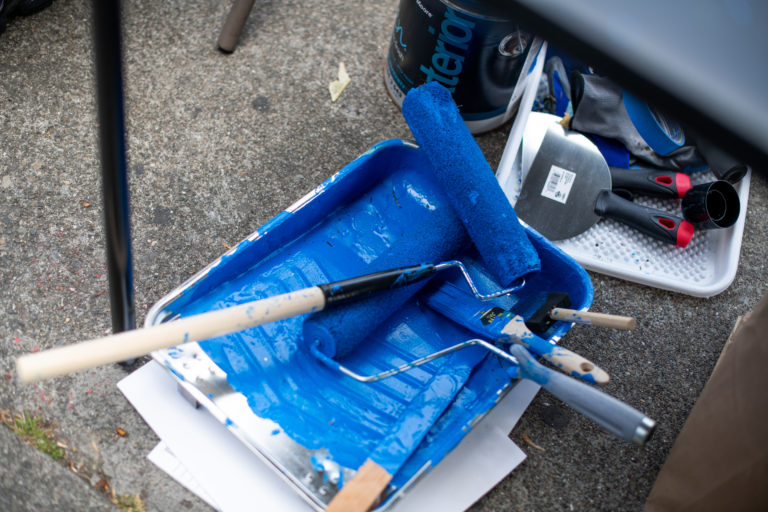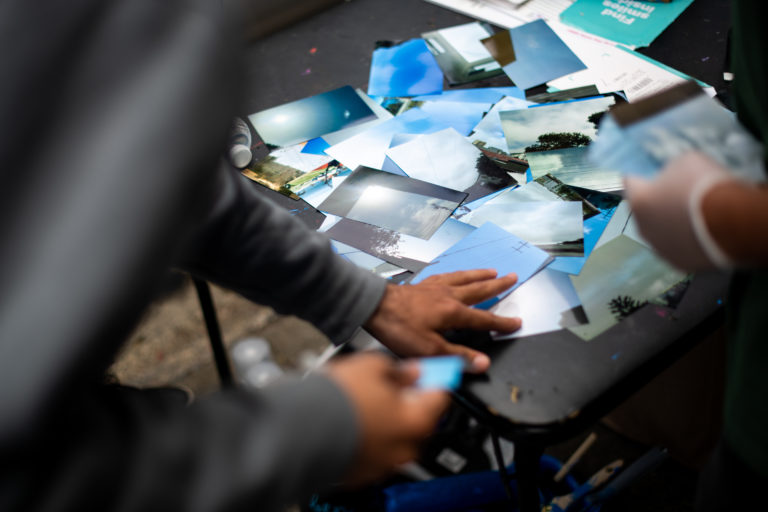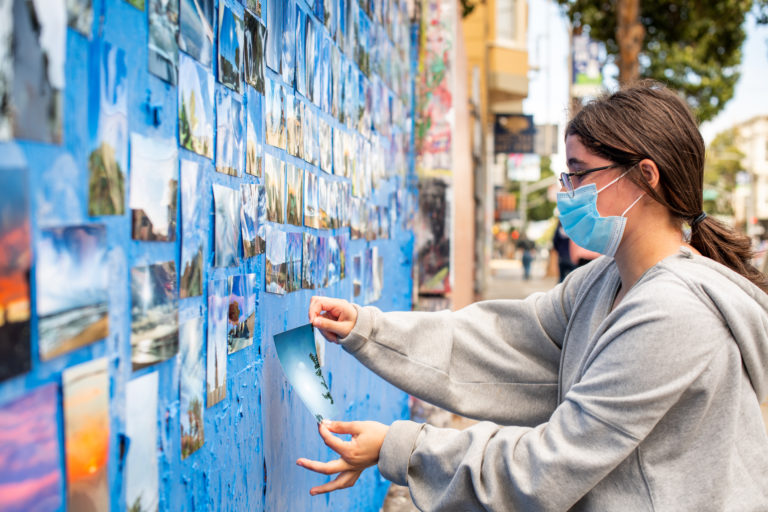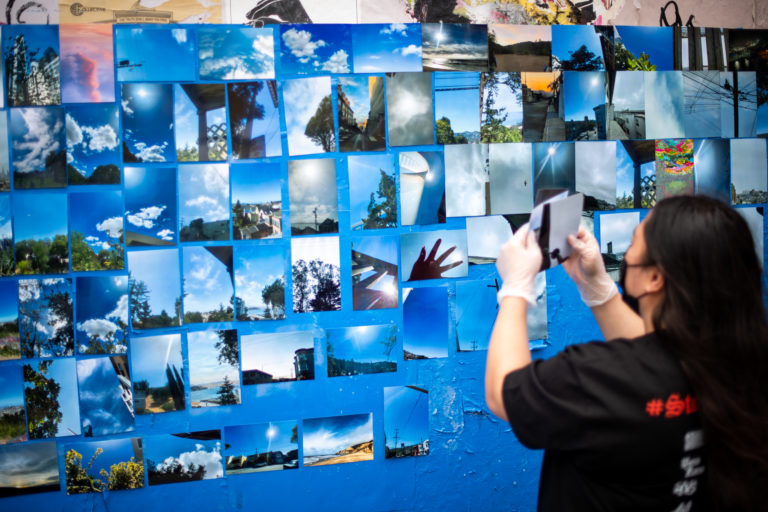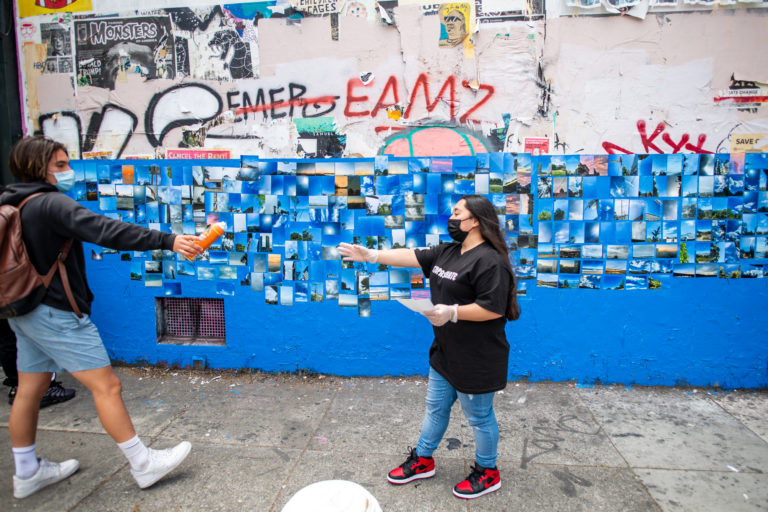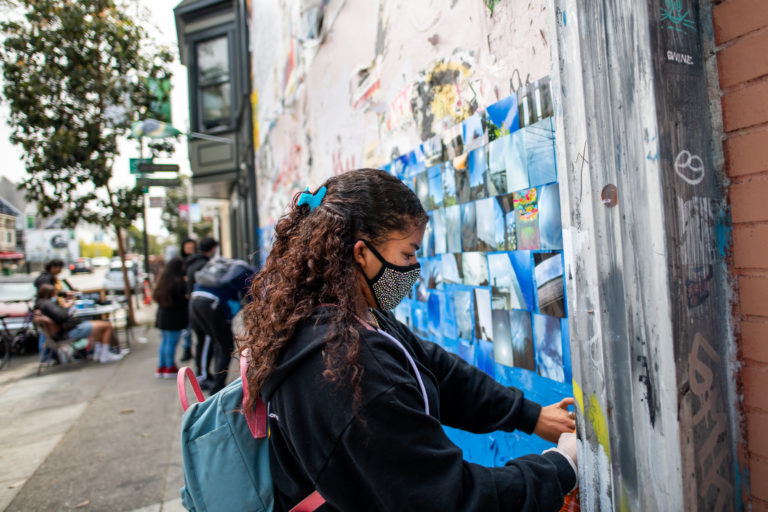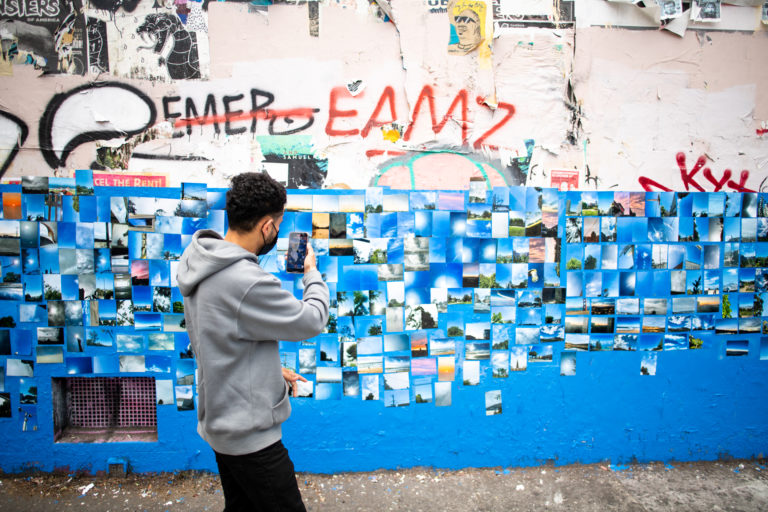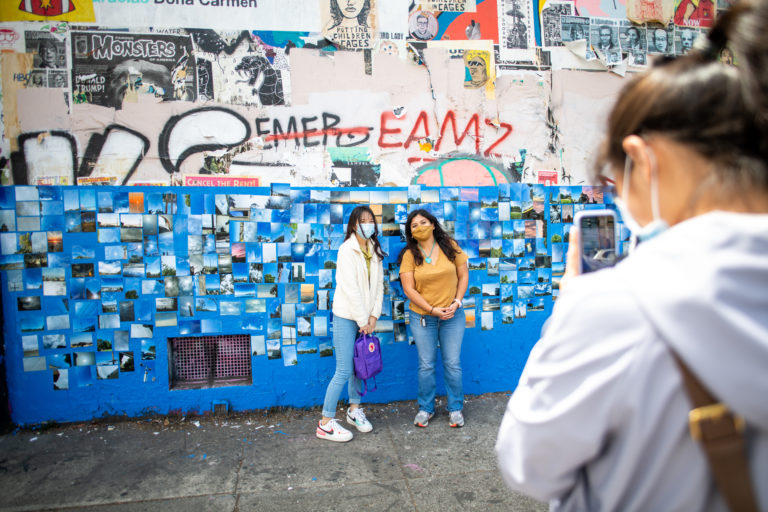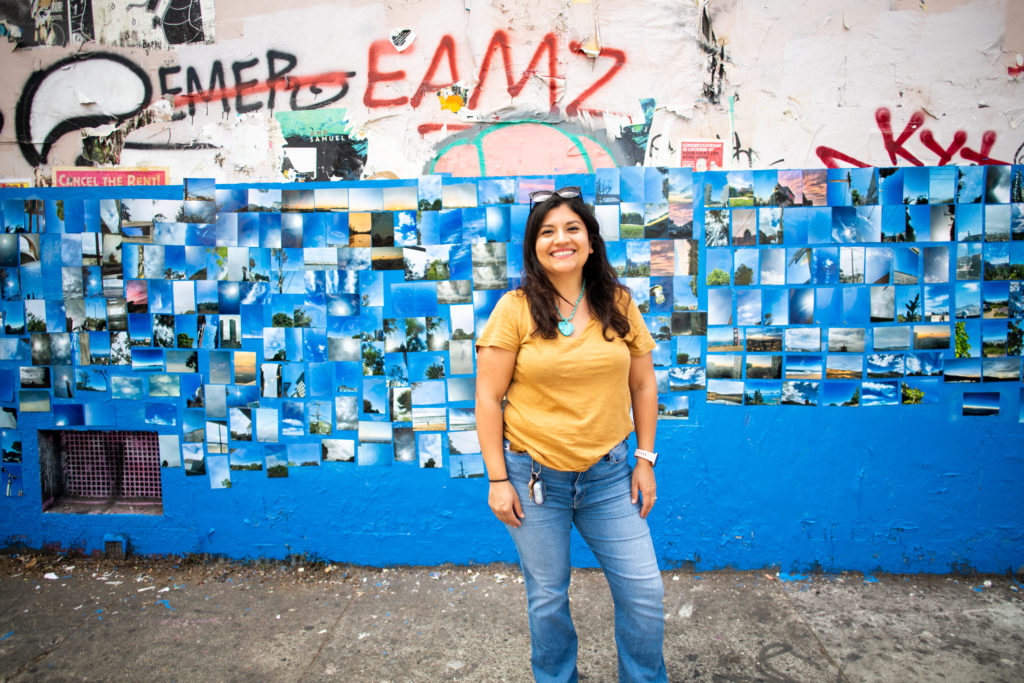
On June 1, 2021, the last day of school before summer break, Mission High School teacher Andrea Gonzales and her photography students gathered on Valencia Street to finish a photo mural months in the making. “I knew that I wanted at least one memory where students could come together,” Gonzales recalled. So, the students spent their last day of class in the fresh air, gluing photo grids of the blue Bay Area skies that connected them while virtual learning during the COVID-19 pandemic.
Gonzales found inspiration for the class assignment in artist Penelope Umbrico’s project Sunsets (2006–ongoing), an iteration of which is in SFMOMA’s permanent collection. A response to the sameness found on online photo-sharing sites, the collection work consists of more than one thousand cropped images of the sun that Umbrico downloaded from photo-sharing website Flickr, where, in 2006, “sunset” was the most popular image tag. Sunset’s themes of collective practice and authorship are apt for instruction any year, but in 2020 the work’s critical commentary—warmth of our natural world, compressed in a digital environment—proved most resonant.
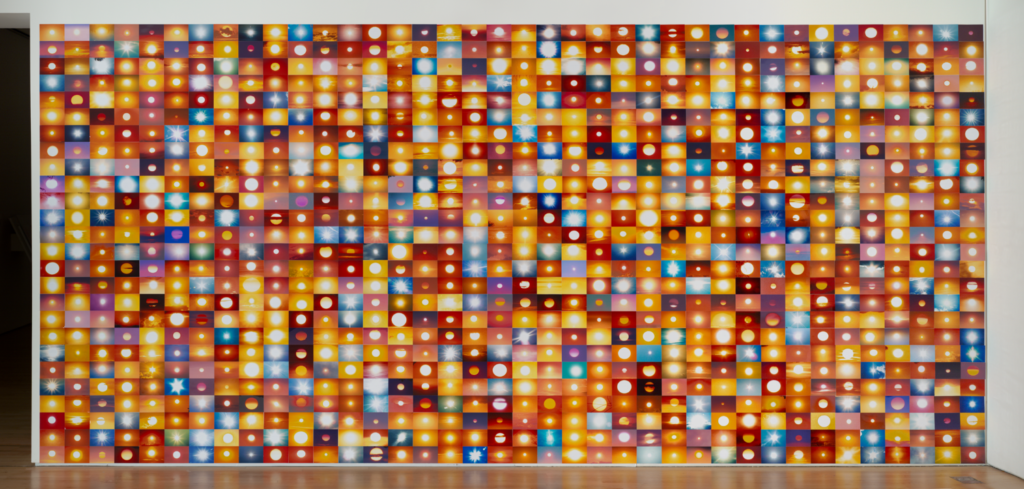
Penelope Umbrico, 5,377,183 Suns (from Sunsets) from Flickr (Partial) 4/28/09, 2009 (installation view); © Penelope Umbrico; photo: Ben Blackwell
“The school year was challenging,” says Gonzales, who grew up in Texas and moved to the Bay Area to study at the San Francisco Art Institute. “There was something so painful about not having the physical space to mourn together. I would ask students, ‘have you been outside today? The majority of the time they said ‘no.’ I knew I wanted to create a lesson that forced students to go outside and just pay attention to the sky.”
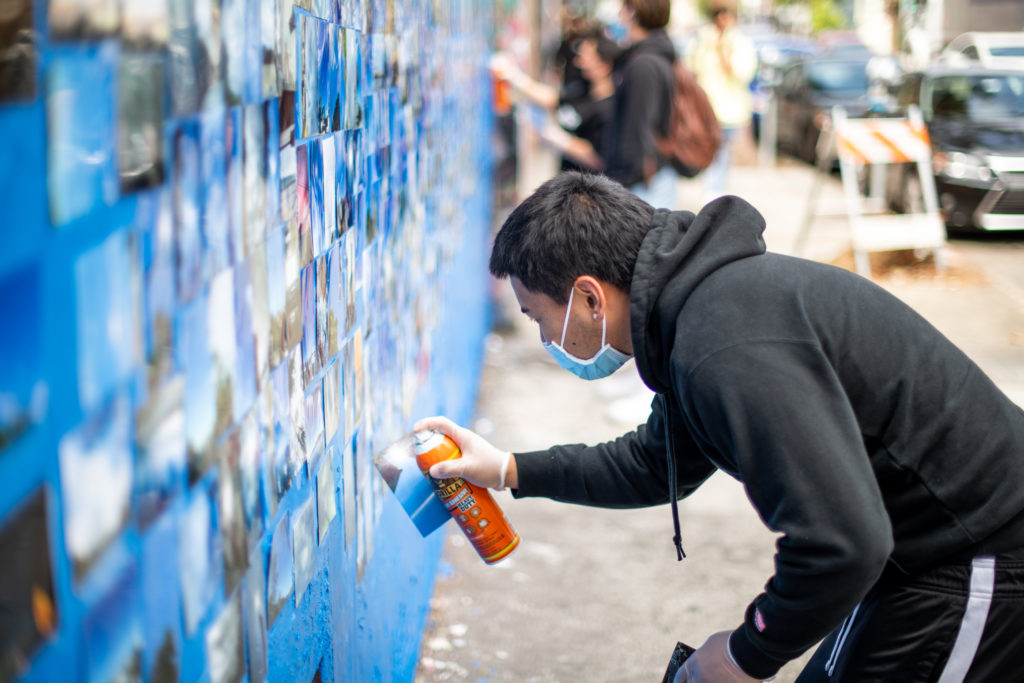
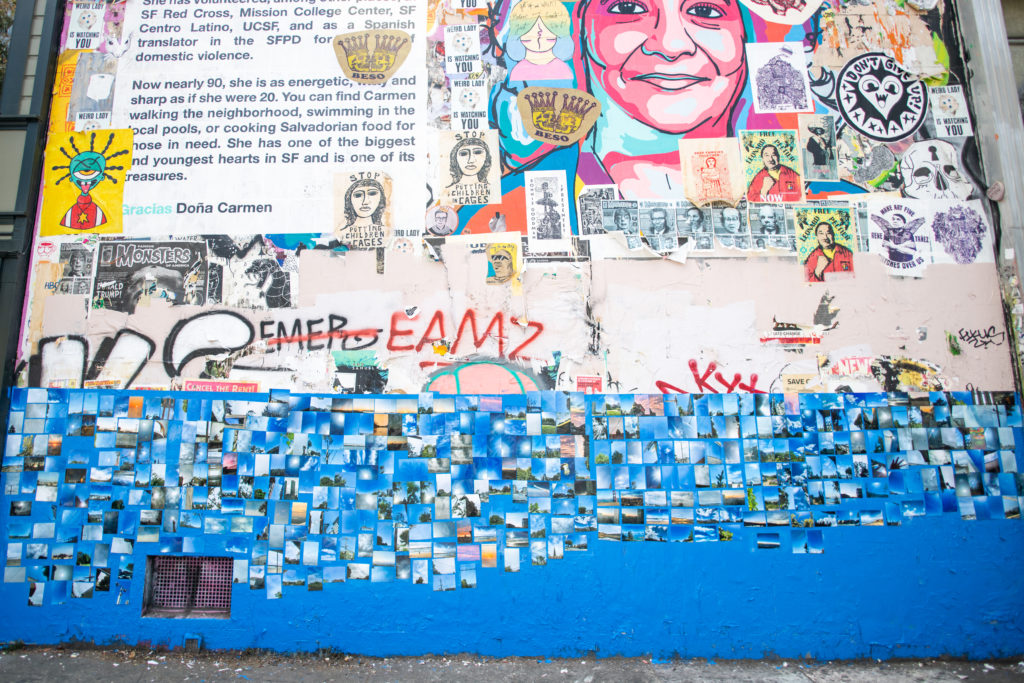


Gonzales, who began teaching at Mission High in 2014, took the idea back to SFMOMA’s Teacher Advisory Group. Each year, Julie Charles, SFMOMA’s Deborah and Kenneth Novack Director of Education, invites Bay Area teachers to participate in the initiative with the aim of creating a support network; teachers from different schools, districts, and disciplines gather to share ideas and develop lesson plans around teaching contemporary art and collection works in classrooms. Gonzales worked with Charles and Tamara Porras, SFMOMA’s Manager of Educator Engagement, in a cohort that also included teachers from The Ruth Asawa San Francisco School of the Arts and Downtown High School. Gonzales is also part of the 2022 Cohort, focused on murals in the Mission District.
Below, read Gonzales’s reflections on bringing the idea to TAG, giving the assignment to her class, and finishing the mural with her students in the Mission District.
This interview has been edited for length.
SFMOMA: What was it like creating the mural, or what are some of your memories from that day?
Andrea Gonzales: There was a level of happiness my students and I experienced. When my teacher’s assistant pulled up in his aunt’s minivan in front of the mural and shouted, “Ms. Gonzales! I’m here and I brought my own chair,” my heart smiled. These are memories that money could never buy. The students witnessed how art can inspire ideas and witness the life cycle of an idea—we had this idea, talked about it in class, and then we were out there doing it! Plus, the mural looked very nice.
People from the neighborhood came out and asked what we were doing. One student responded by saying “We are making our neighborhood beautiful.” I think it’s imperative to teach youth not only how to create work skillfully and conceptually but also teach them to take risks to have their work shown. These are the streets they walk on to go to school, the grocery store, walk their younger siblings to and from school, and where they socialize. If I can create and cultivate that experience— where they can walk by and say “I did that!” and feel proud of their work—I did my job as a teacher.
Scenes From Mural Making
SFMOMA: Can you walk me through how you worked with TAG to develop the assignment?
AG: It was the first time in my professional career I was able to share ideas with educators from across the district who teach various subjects. We met online with Tamara and Julie weekly on Zoom. After each educator developed their lesson plan, we each took turns presenting our lessons and then allowed time for feedback from the entire cohort.
Being a teacher in the classroom, it is a rare occasion to have one-on-one time in a room of other professionals to carefully craft lesson plans. Having the space and time to present and give and get feedback is what really helped. I knew that I wanted to create a Penelope Umbrico inspired photo-mural, but I wasn’t sure exactly how to do so. How many photos should I print? Where do I print these few hundred photos? How to have students show up at various times for Covid safety? So many logistical questions overwhelmed me. The cohort was very helpful to give feedback and critiques that helped make this project student-centered.
SFMOMA: What about Sunsets made it a good lesson for the students, or what attracted you to it?
AG: There is an element of accessibility to the piece. Who has not taken a photo or wanted to take a photo of a sunset? I think it’s important to create a curriculum that is accessible to students. Many of my high school students have never taken a photography class or art class!
It was a catalyst for many passionate, open dialogue conversations with students to discuss the role of artists as both collectors of images and creators of images. Can one person own the rights to the sun? Does one have to create the literal image or can one orchestrate a collection of images? My other prized question while teaching from this piece is: What do you think is the most searched image this year? As an educator, it’s interesting to hear how students’ answers change.
SFMOMA: You had the students photograph the sky — were there any particular instructions you gave them? Were there any surprises or first impressions you recall from seeing their photographs the first time?
AG: I first asked students if they preferred sunrises or sunsets. I thought it was a fun question to begin the discussion and get them engaged. I set a timer for twenty minutes and told them to go outside and find ten different ways to photograph the sky. We had studied composition in the unit prior, so they knew the different compositional rules they could apply. They came back and uploaded their photos on Google classroom.
As a class, we looked at the photos and wrote responses to images that caught our eye. They were all surprised to see their classmates’ photographs! For a few moments in that class period, we all felt connected. They could see where their classmates were at. Students recognized buildings and loved commenting on each other’s work.
SFMOMA: You’re also in this year’s cohort—focused on the history of murals in the Mission District! What do you love about the Mission District?
I love the culture, food, art, and, most importantly, its history! It truly is a special neighborhood in my heart. As a Latinx educator, I feel honored to be able to serve this community. Every year I teach a lesson on street art and we walk from Mission High School to Clarion Alley. So to have an entire group focused on murals in the Mission? I am stoked to say the least.
